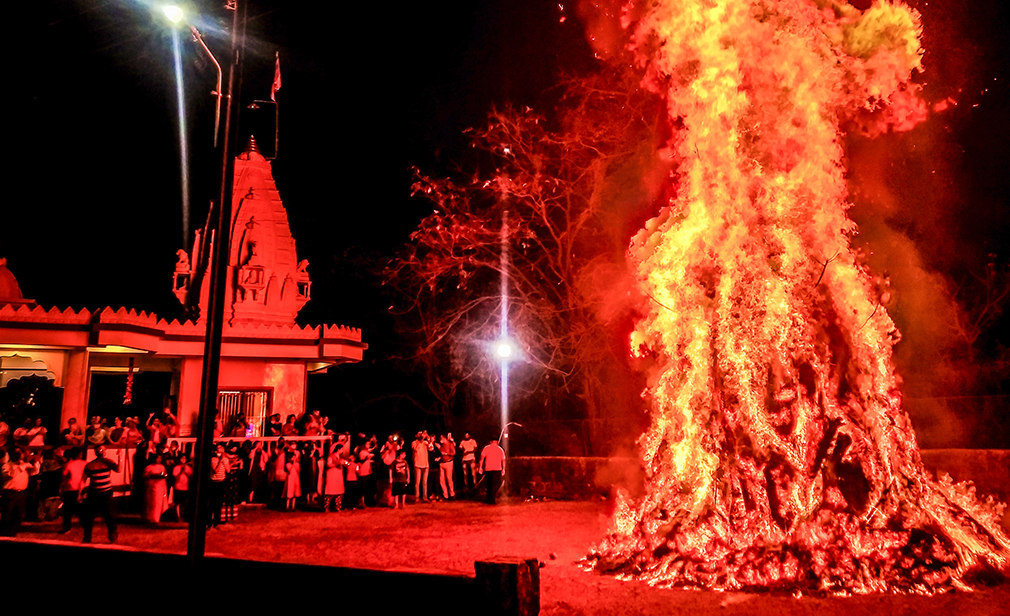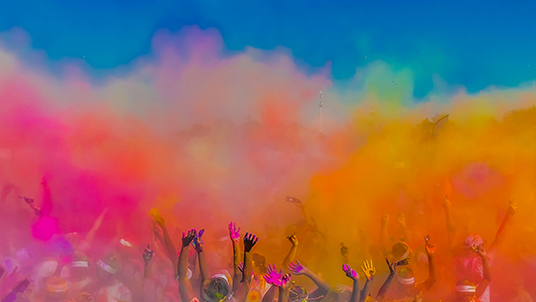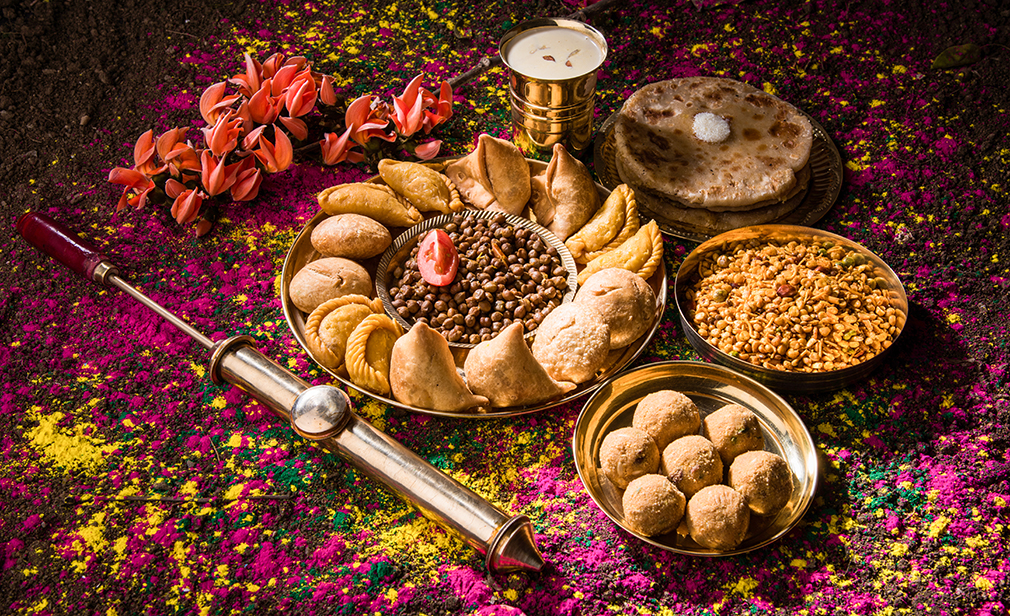These colours are said to each symbolise something different – green for rebirth, red for marriage and fertility, yellow for purity and victory, and blue for Lord Krishna. Holi is often associated with the divine love of Radha and Krishna, which is why it is also known as the festival of love. Come, join in the festivities of this sacred tradition, and get ready to scream out loud, “Holi Hai!”
A celebration of tradition
On the eve of Holi, a symbolic bonfire known as Holika Dahan is ceremoniously lit. Witness families gather around the crackling flames, sharing stories and offering prayers for a prosperous new year.
This is not just a simple fire, it's a symbol of triumph over evil, a roaring blaze that sets the stage for the vibrant spectacle about to unfold the next day. This ritual has its roots in the legend of the demon king Hiranyakashipu, who wished to end the life of his blessed son Prahlada with the help of his sister Holika. However, she instead burned in the fire that was meant to kill Prahlada, who survived without harm. Since then, the ritual symbolises the burning away of negativity and the day is celebrated as a victory of good over evil.
Another legend recounts the playful love story of Radha and Krishna, deities revered for their eternal love. It's said that Krishna, with his blue skin, would playfully tease Radha by smearing colours on her face. Holi's vibrant colours echo this playful tradition, a reminder to embrace joy and love in all their messy, beautiful forms.





























